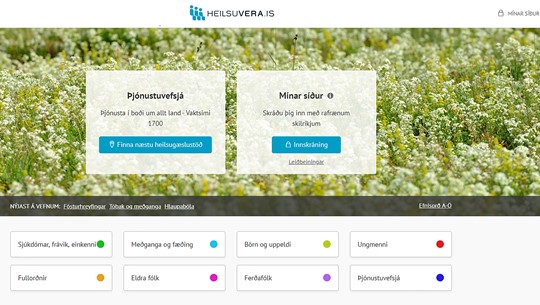The Citizen Health Portal in Iceland is a centralized web application that offers citizens secure, digital access to their own health information and eHealth services. The portal is integrated into the Electronic Health Record (her) and provides access to health information and eHealth services for citizens through a single access point, whenever and wherever needed, regardless of which hospital, primary health care or private practice delivered the healthcare services. As health data are sensitive personal data, eID is the request for accessing the health portal. Parents have access to their children’s health data up to 16 years of age. The ultimate goal of the Citizen Health Portal is the effective use of eHealth services to support increased patient safety and quality of healthcare delivery.
The expected benefits of the Citizen Health Portal include increased access to health care, increased patient safety and quality of care, better compliance with treatment and increased collaboration between patients and their caregivers, more empowered patients, improved patient outcomes, increased efficiency and reduced costs.
Users of the health portal are Icelandic citizens aged 16 years and over. For younger children, parents have access. The number of users has grown significantly since the portal was first implemented and 27% of the total population aged 16 years and over used the health portal in 2018. The number of users more than doubled between 2017 and 2018. Women comprise 63% of all users and women in the age group from 30–59 years are the most frequent users. Users come from all districts of the country.
 Distance treatment
Counseling via online tools with associated treatment or own treatment.
Distance treatment
Counseling via online tools with associated treatment or own treatment.
 Distance monitoring
Social care remotely with sensors, cameras, reminders and data collection.
Distance monitoring
Social care remotely with sensors, cameras, reminders and data collection.
 Distance meetings
Close care concepts that move the point of healthcare closer or into the citizens' own homes.
Distance meetings
Close care concepts that move the point of healthcare closer or into the citizens' own homes.
 New distance-spanning solutions
New innovative solutions, new national infrastructure for digital services and service models where citizens can take greater responsibility.
New distance-spanning solutions
New innovative solutions, new national infrastructure for digital services and service models where citizens can take greater responsibility.
 Show all solutions
Show solutions from all four categories
Show all solutions
Show solutions from all four categories
